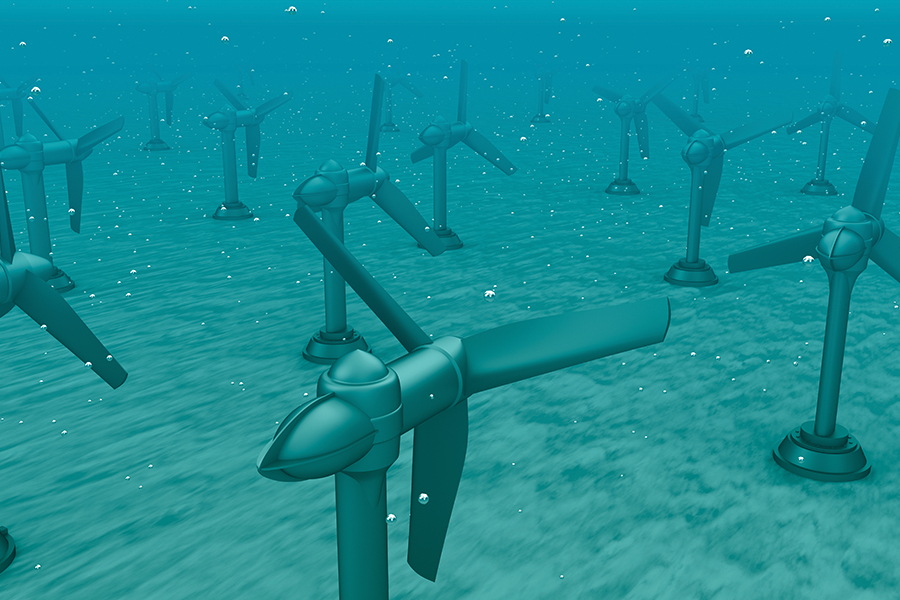From The Intelligent Optimist Magazine
Fall/Winter 2016
There’s enough wave energy in the oceans to power the world, and scientists and businesses are finally close to harnessing it. For decades wave energy has lagged behind wind energy and solar because harnessing it is more complex. But for Jim Dehlsen what works for wind power should also work under the sea. Dehlsen is a 79-year-old wind energy pioneer who successfully built and sold two wind turbine companies. His latest company, Aquantis based in California, takes his experience under water: He’s flipping turbines upside down and places them on the bottom of the sea, up to 1,000 feet deep. There, marine currents provide a reliable constant flow of energy: The wind blows intermittently, however ocean currents generate steady power 24/7.
Aquantis’ first project will be launched in 2018 off the coast of Wales and the Isle of Wight in the United Kingdom. Then, in 2019, Aquantis will deploy a 200-megawatt field of marine turbines in the strong Gulf Stream off the coast of Florida. Dehlsen estimates that his Florida project will generate power at 9 cents a kWh. The average wind energy project today generates electricity at between 7 and 8 cents a kWh. “The oceans are the major remaining potential for renewable energy”, he says.
That view is echoed by a report from the Intergovernmental Panel on Climate Change that suggests that the power-generating potential of the world’s oceans exceeds human energy requirements. Most importantly, most of humanity lives near seas. The U.S. Department of Energy has calculated that the waves along American coastlines can generate as much 2,640 terawatt hours a year—enough to power more than 200 million American households, free of emissions. And waves are more consistent and predictable than either solar or wind power.
After lagging behind wind and solar for decades, wave-power is quietly and gradually gaining momentum. It had to overcome some substantial challenges, like installing turbines in a treacherous and corrosive environment. Aquantis ultimately found the right blades for its turbines in New Zealand that hosts some of the world’s best sailors. The boards of sail boats used in the most competitive sail races turned out to provide the inspiration for the strong and resilient turbine blades that can withstand the ocean swells.
Apart from the consistency of wave power, another advantage is the density of the energy that the ocean provides. Water moving at 12 miles an hour—which is quite normal—offers the same power potential as wind moving at 110 miles per hour—not so normal, or even desirable.
Underwater windmills are not the only to harness the power of the seas. The Swedish company called CorPower Ocean has been a buoy which generates power while bouncing up and down on the surface of the ocean. The mechanical movement of the buoy creates energy. A single buoy can generate about 250 kilowatts of power—enough to cover the electricity needs of 200 homes. Wave-power farms could contain hundreds or even thousands of them.
Another hydropower company, Voith from Germany, has created a wave power station that uses a chamber where waves filter in an out. This movement allows for air to pass in and out of the hole at the top of the chamber. This air powers a turbine, which then powers a generator to create energy.
With turbines, buoys and creativity humanity is finally beginning to tap one of the biggest clean energy sources on the planet.











